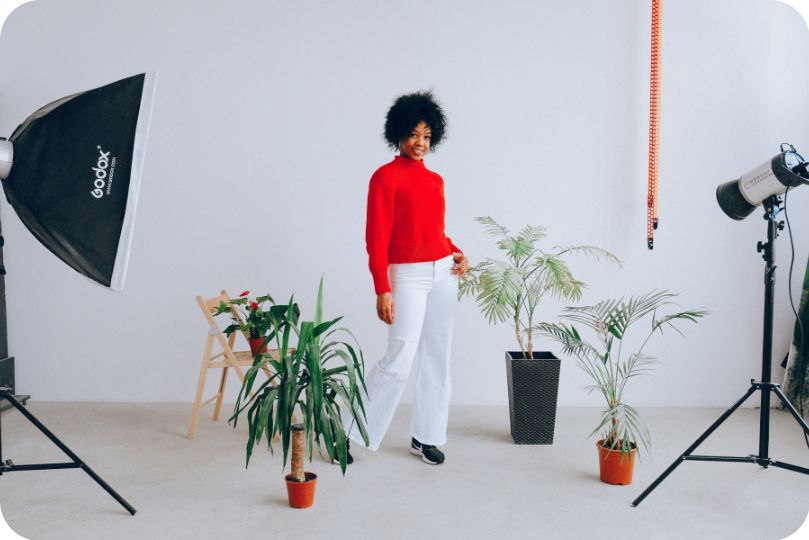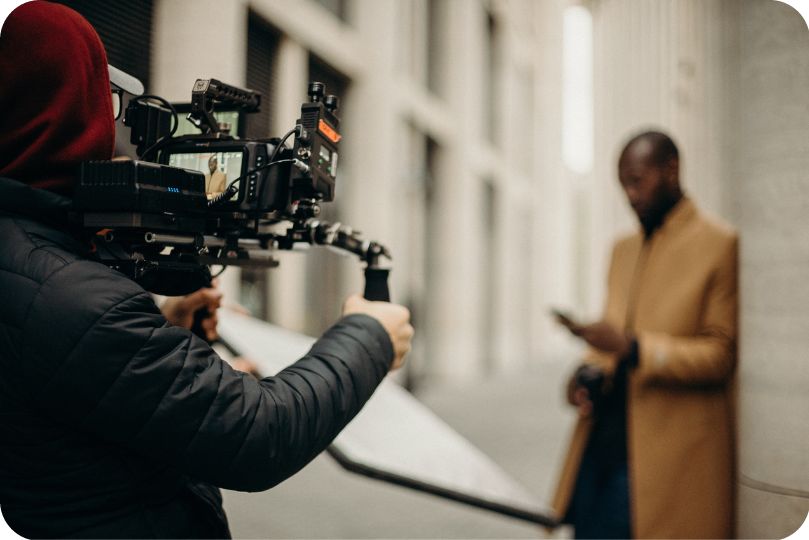Modeling Photography: Tips for Capturing Timeless Beauty
Modeling photography, a captivating art form, aims to immortalize the beauty and essence of models while showcasing fashion, beauty products, or artistic expressions. It thrives on the seamless collaboration between the photographer and the model, each contributing their unique expertise to craft timeless and impactful images. Effective communication is the heartbeat of successful modeling photography, where clear instructions and open feedback empower models to express their true selves. Amidst carefully chosen settings and lighting, the skillful understanding of body language and facial expressions breathes life into the captured moments. This article will delve into the world of modeling photography, providing essential tips for photographers and models to master this art and tell compelling visual stories.
Modeling Photography Guide
I. Effective Communication and Posing
Effective communication and posing are crucial elements for successful modeling photography. Photographers must provide clear instructions and guidance to models to achieve the desired look and mood for the photographs. Building rapport and establishing a comfortable environment allows models to express themselves naturally, resulting in genuine and captivating poses. Directing models through verbal cues and demonstrations helps convey emotions and storytelling elements. Additionally, open communication between photographers and models fosters creativity and collaboration, leading to remarkable images that truly capture the essence of the subject. Mastering the art of communication and posing elevates the quality of modeling photography and creates timeless beauty in every shot.

II. Creating the Right Environment
Creating the right environment is paramount in modeling photography. Selecting suitable locations and backgrounds that align with the theme enhances the overall visual impact of the images. Understanding and utilizing lighting, both natural and artificial, plays a crucial role in setting the mood and atmosphere for the photoshoot. Carefully managing props and accessories can complement the concept and bring the desired narrative to life. A well-crafted environment puts the model at ease and enhances their performance, resulting in more authentic and captivating photographs. By paying attention to every detail, photographers can create a captivating environment that elevates the overall quality of modeling photography.
III. Understanding Body Language and Facial Expressions
Understanding body language and facial expressions is essential in modeling photography. Photographers must guide models to convey emotions and tell a story through their poses. Capturing authentic and natural expressions adds depth and authenticity to the images. Encouraging models to be expressive and bring out their personalities fosters a strong connection between the subject and the viewer. Photographers should pay attention to subtle nuances in body language, as it can significantly impact the overall mood and message of the photograph. Mastering the art of capturing emotions through body language and facial expressions elevates modeling photography to new heights of visual storytelling.
IV. Fashion and Styling
Fashion and styling play a central role in modeling photography. The selection of appropriate outfits and attire is crucial in conveying the desired message or concept of the photoshoot. Collaborating with stylists or designers can elevate the overall visual appeal of the images. Makeup and hairstyling are essential components that enhance the model’s features and complement the chosen fashion. Each element, from clothing to accessories, contributes to the narrative and aesthetics of the photographs. Coordinating fashion and styling with the overall concept ensures a cohesive and impactful presentation, creating visually stunning images that resonate with the audience. Skillful attention to fashion and styling transforms modeling photography into an art form that showcases beauty and creativity.
V. Composition and Framing
Composition and framing are critical aspects of modeling photography that significantly impact the final results. By applying various composition techniques, photographers can create visually pleasing and balanced images that draw the viewer’s attention to the subject.

- Rule of Thirds: Dividing the frame into a 3×3 grid helps photographers position the model and other elements in the scene to create a harmonious balance.
- Leading Lines: Utilizing leading lines, such as pathways or architectural features, can guide the viewer’s gaze towards the model, emphasizing their presence in the image.
- Symmetry: Symmetrical compositions create a sense of order and stability, making them powerful tools for portraying elegance and beauty in modeling photography.
- Negative Space: Leaving empty space around the model can highlight their form and add a sense of drama or serenity to the photograph.
Photographers should consider the overall concept and mood of the photoshoot when deciding on the most appropriate composition and framing techniques. By skillfully using these tools, photographers can create impactful images that captivate the audience and showcase the model’s beauty and charisma.
VI. Post-Processing and Editing
Post-processing and editing are essential steps in modeling photography that allow photographers to fine-tune and enhance their images. While capturing a great shot is crucial, post-processing can take the photograph to the next level, ensuring it meets the desired vision and style.
- Retouching: Careful retouching can remove minor imperfections while preserving the model’s natural beauty. This step requires a delicate balance, as excessive retouching can lead to unrealistic and unnatural-looking results.
- Color Correction: Adjusting the color balance and tones can enhance the overall mood and atmosphere of the photograph. Correcting white balance issues and fine-tuning colors ensure the image accurately represents the intended emotion.
- Contrast and Exposure: Adjusting contrast and exposure can bring out the details in both the model and the background, adding depth and dimension to the photograph.
- Sharpening: Proper sharpening enhances the image’s clarity and makes the subject stand out, but it should be used judiciously to avoid over-sharpening.
It is essential to maintain the model’s authenticity during post-processing while achieving the desired artistic effect. Photographers should strive to create polished and professional images without compromising the model’s natural features. Understanding post-processing tools and techniques can transform a good photograph into a captivating work of art, leaving a lasting impression on the audience.
VII. Building a Professional Portfolio
Building a professional portfolio is a crucial step for both aspiring models and photographers in the modeling industry. A well-crafted portfolio showcases the individual’s skills, versatility, and unique style, acting as a powerful tool to attract clients, agencies, or potential collaborators.
- Image Selection: Carefully curate the portfolio with high-quality images that represent the individual’s best work. Emphasize variety and diversity, including different styles, themes, and moods to showcase the range of talents.
- Consistency and Cohesion: While diversity is essential, the portfolio should have a cohesive flow that reflects the individual’s signature style or brand. Consistent editing and a unified visual language help tie the portfolio together.
- Highlighting Strengths: Identify and prioritize images that highlight the individual’s strengths and specialties. Tailoring the portfolio to the intended audience or niche can leave a lasting impression.
- Showcasing Versatility: Alongside highlighting strengths, demonstrate versatility by including images that display the ability to adapt to various genres or concepts.
- Online Presence: In the digital age, having an online portfolio is crucial. Create a professional website or utilize portfolio platforms to reach a broader audience and gain exposure.
- Organized Presentation: Present the portfolio in a logical and visually appealing manner. Provide context for each image, including the concept, team, and any notable achievements.
- Update Regularly: A portfolio should be dynamic and reflective of the individual’s growth. Regularly update it with fresh and relevant work to keep it current and engaging.
A well-constructed portfolio acts as a visual resume, leaving a lasting impression on potential clients and collaborators. It is an essential tool for advancing one’s career in the modeling industry, serving as a testament to the individual’s talent, dedication, and professionalism.

VIII. The Importance of Trust and Comfort in the Photoshoot Environment
In modeling photography, the importance of trust and comfort in the photoshoot environment cannot be overstated. Establishing a safe and supportive space is essential to bring out the best in both the model and the photographer, fostering creativity and collaboration throughout the process.
- Building Rapport: Before the photoshoot, take the time to establish a connection with the model. Engage in casual conversation to build rapport, making the model feel at ease and more comfortable in front of the camera.
- Respecting Boundaries: It is crucial to respect the model’s personal boundaries and limitations. Ensure that the model feels comfortable with the poses and concepts, and be receptive to any concerns they may have.
- Creating a Professional Atmosphere: Maintain professionalism throughout the photoshoot. Be clear and respectful with instructions, and treat the model with courtesy and dignity.
- Communicating Vision and Intent: Clearly communicate the vision and goals of the photoshoot to the model. When the model understands the purpose and desired outcome, they can actively contribute to the creative process.
- Allowing Creative Freedom: Encourage the model to express their ideas and creativity during the shoot. Allowing them to contribute to the creative process fosters a sense of ownership and pride in the final results.
- Providing Breaks and Support: Photoshoots can be physically and emotionally demanding, especially for models. Offer breaks as needed and provide emotional support throughout the process.
- Respecting Model’s Autonomy: Always seek the model’s consent before trying new poses or ideas. Respecting their autonomy and agency is essential for creating a collaborative and respectful environment.
When models feel trusted, respected, and comfortable, they are more likely to open up, leading to more genuine and expressive photographs. A positive and supportive photoshoot environment fosters a strong sense of teamwork, elevating the quality of the images and the overall experience for everyone involved. Building trust and comfort is not just essential for one photoshoot but lays the foundation for long-term relationships and successful collaborations in the modeling photography industry.
Conclusion:
modeling photography is an intricate art form that requires collaboration, communication, and creativity from both photographers and models. By understanding the significance of effective communication and guiding models to express genuine emotions, photographers can capture timeless beauty in their images. The choice of location, lighting, fashion, and styling play pivotal roles in shaping the visual narrative, while strong composition techniques bring balance and focus to the photographs.
Post-processing should be handled with care to preserve the model’s natural beauty while enhancing overall quality. Building a professional portfolio and fostering relationships within the industry are essential steps toward success. With dedication and a commitment to continuous growth, modeling photography can be a gratifying journey, yielding captivating images that resonate with audiences worldwide.
